A safety valve protects people, the environment, and other plant assets from overpressure that may cause explosions or other damaging events. A safety valve opens automatically anytime a set pressure is exceeded. Safety valves are last-resource devices that intervene when other protection devices fail. The three main types of safety relief valves are: spring-loaded, pilot-operated, and dead-weight. API526 sets standards for safety relief valves.
SAFETY VALVE
WHAT IS A SAFETY VALVE
A safety valve opens automatically and at once anytime the pressure of the fluid passing through the valve goes above a set pressure (in bars or psi).
When an overpressure is detected, the disc of the valve opens so it can discharge the fluid and restore normal pressure conditions in the piping system.
As the fluid pressure decreases below a set value, the valve closes back again. These movements are mechanical, i.e. there are no actuators or external devices to the valve that execute the open/close operations.
Safety valves may be installed on pressure vessels, boilers, gas storage tanks, and piping systems.
The standards for safety valves are API 526 or ASME.
SAFETY VALVE VS. PRESSURE RELIEF VALVE
Sometimes, the terms safety valve and pressure relief valve are used as synonyms.
However, differences exist between safety vs pressure relief valves:
- A safety valve opens fully, and suddenly, as the set overpressure limit is reached by the equipment (vessel, boiler). Safety valves relieve the pressure without the assistance of a controller and an operator.
- A pressure relief valve (called also, “PRV”): a pressure relief valve (PRV) is a type of safety valve used to control or limit the pressure in a system. It prevents excessive pressure build-up that could lead to equipment failure, explosions, or fires. The valve operates by releasing excess pressure through an auxiliary passage, allowing the pressurized fluid to flow out of the system. When selecting a PRV, consider the operating pressure range, flow requirement, failure mode, and temperatures the valve must withstand. It’s important to choose the right valve for your specific application to ensure the safety and proper functioning of your system
Pressure relief valves are often utilized to protect pressure vessels filled with fluids. The opening of the disc of a PRV valve is proportional to the increase in the vessel pressure (i.e., it’s gradual) and not sudden (like in a safety valve). Pressure relief valves generally operate through the combination of a pressure controller and an actuating mechanism (which opens the valve disc proportionally to the overpressure signal received by the controller).
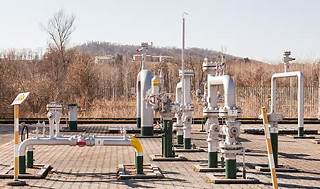
The pressure in a vessel or a piping system can exceed a threshold limit due to multiple reasons. The API 521 specification illustrates the typical root causes:
- Blocked discharge
- Chemical reaction
- Tubes and other devices rupture
- Fire case (the equipment is exposed to external fire)
- Thermal expansion
- Cooling system failure
Each of these adverse events may occur separately or simultaneously and can create different mass or volume of flow to be discharged, e.g. small mass flow for thermal expansion and large mass flow in case of a chemical reaction.
The engineering team shall determine the worst-case scenario for the sizing and selection of a suitable pressure relief device, considering the above factors.
TYPES OF PRESSURE RELIEF VALVES
The main types of pressure relief valves (PRVs) and their characteristics are described below:
Balanced Spring Loaded:
- Designed to decrease backpressure effects.
- Protects the bonnet spring and guide from released fluids.
- Two equal disks: one unloaded into the air, the other subjected to backpressure.
Conventional Spring Loaded:
- Consists of the bonnet, guide, and spring in the released fluids.
- Venting into the atmosphere lowers the set pressure due to relief-system backpressure.
- Inward venting to the outlet reverses the process, making the set pressure higher
Pilot-Operated:
- Controlled by a pilot system.
- Allows for more precise pressure control.
- Commonly used in critical applications.
Temperature-Activated:
- Responds to temperature changes.
- Opens when the system temperature exceeds a set limit.
- Ideal for scenarios where temperature fluctuations impact pressure.
Balanced Bellows:
- Uses a bellows to diffuse and reduce back pressure.
- Provides better sensitivity and accuracy.
- Suitable for applications with varying backpressure.
Nozzle Type:
- Features a nozzle-shaped outlet.
- Efficiently discharges pressurized fluid.
- Often used in high-flow scenarios.
Diaphragm Type:
- Utilizes a flexible diaphragm.
- Suitable for low-pressure applications.
- Offers quick response time.
Piston Type:
- Employs a piston to control flow.
- Used in both liquid and gas systems.
- Provides stable operation.
Acting Type:
- Combines features of spring-loaded and pilot-operated valves.
- Offers good adjustability and responsiveness.
Remember, selecting the right type of PRV depends on your specific industry, system requirements, and safety considerations. Each type has its advantages and disadvantages, so choose wisely to ensure safe and efficient operation.
HOW A SAFETY VALVE WORKS
Safety valves are critical components in a wide variety of industries, including oil & gas, construction, and power generation, ensuring the safety of equipment, processes, and personnel. These valves play a pivotal role in protecting systems from the potential dangers of overpressure, which can lead to equipment failure, fires, explosions, and environmental hazards. Understanding how safety valves function is essential for anyone involved in designing, operating, or maintaining systems that operate under pressure.
Basic Principle of Operation
A safety valve is designed to automatically release gas, steam, or liquid from a pressure vessel or system when the pressure or temperature exceeds preset limits. The fundamental principle behind its operation is to provide a controlled pathway for the excessive pressure to be safely discharged, thereby preventing the buildup of potentially dangerous conditions.
Main Components
- Valve body: The main structure that contains the internal components and provides the pathway for fluid discharge when the valve opens.
- Seat: A surface inside the valve body against which the disc or valve plug seals to prevent flow under normal operating conditions.
- Disc: The component that moves away from the seat to allow flow through the valve when relieving pressure.
- Spring: A key element that applies a force to keep the valve closed. The spring’s tension can be adjusted to set the pressure at which the valve will open.
- Spindle: A shaft that connects the disc to the actuating mechanism, transferring the movement to open or close the valve.
- Lever (in lever-operated valves): A mechanism that can be used to manually lift the valve disc off the seat to test the valve or relieve pressure.
States of a Safety Valve
Normal Operation: During normal operations, the pressure inside the system is below the safety valve’s preset opening pressure. The force exerted by the spring keeps the disc seated against the valve seat, preventing any flow through the valve.
Overpressure Condition: If the pressure in the system rises above the setpoint for which the safety valve is configured, the force exerted by the system’s pressure on the disc exceeds the spring force. Once this threshold is crossed, the disc begins to lift off the seat, opening the valve.
Discharge Phase: As the valve opens, the overpressure fluid (gas, steam, or liquid) is discharged through the valve outlet, reducing the system’s pressure. The discharge continues until the system pressure falls back below the valve’s set pressure, at which point the spring force overcomes the reduced system pressure, pushing the disc back onto the seat to close the valve.
Resetting: The safety valve automatically resets itself after discharging the overpressure, ready to respond again if another overpressure condition occurs. This auto-reset feature is crucial for continuous protection without manual intervention after each operation.
Considerations for Safety Valve Design and Selection
- Capacity: The valve must have sufficient capacity to discharge the pressure quickly enough to prevent the system pressure from exceeding allowable limits.
- Set Pressure: This is the pressure at which the valve is designed to open. It is typically set slightly above the system’s normal operating pressure but below the maximum allowable working pressure (MAWP) of the system.
- Overpressure: The percentage increase in pressure above the set pressure at which full valve opening occurs. This factor is essential for ensuring the valve opens fully and quickly enough to relieve dangerous pressures.
- Blowdown: The difference between the set pressure and the pressure at which the valve reseats. Blowdown is adjusted to prevent the valve from frequent cycling, which can lead to wear and fatigue.
Safety valves are indispensable safety devices that protect lives, equipment, and the environment. Understanding their operation and correct application is crucial for the safe and efficient management of any pressure-containing system.
PARTS OF A SAFETY VALVE
The safety valve is a critical component in various industrial systems, designed to prevent the occurrence of dangerous pressures by automatically releasing substances when a predetermined pressure is exceeded. Understanding the parts of a safety valve is crucial for those involved in the design, maintenance, and operation of pressurized systems in the oil & gas, construction, and power generation industries. Here’s a detailed look at the main parts of a safety valve and their functions:
1. Body
- Function: The body is the main structure of the safety valve, housing all internal components. It provides the pathway for the discharge of the pressurized medium when the valve opens.
- Materials: It is typically made from materials capable of withstanding high pressures and temperatures, such as carbon steel, stainless steel, or alloy materials, chosen based on the application’s specific requirements.
2. Seat
- Function: The seat is the surface against which the disc or valve plug seals. The quality of the seat’s surface is crucial for ensuring a tight seal and preventing leakage under normal operating conditions.
- Materials: Seats are often made from metals compatible with the body or from softer materials like PTFE (polytetrafluoroethylene) for tighter sealing.
3. Disc
- Function: The disc is the component that moves away from the seat to allow the flow of the pressurized medium during an overpressure event.
- Design: It can be designed as a ball, a piston, or a poppet, depending on the valve design. The disc’s surface is machined to match the seat perfectly, ensuring a tight seal.
4. Spring
- Function: The spring applies a force to keep the valve closed until the pressure exceeds the set value. The tension of the spring can be adjusted to set the opening pressure of the valve.
- Materials: Springs are made from materials that can maintain their characteristics under high temperatures and pressures, such as spring steel or Inconel.
5. Bonnet
- Function: The bonnet covers the opening through which the internal parts of the valve are assembled. It is secured to the body, protecting the internal components and providing a leak-tight seal.
- Materials: Like the body, the bonnet is made from high-strength materials suitable for the application’s pressure and temperature conditions.
6. Spindle (or Stem)
- Function: The spindle connects the disc to the actuating mechanism (e.g., a hand lever or an actuator) and transfers movement to the disc, allowing it to open or close.
- Design: Precision is crucial in the design of the spindle to ensure smooth operation and minimal wear over time.
7. Lever (in lever-operated valves)
- Function: The lever is used in some safety valve designs to manually lift the valve disc off the seat, allowing for testing of the valve or manual pressure relief.
- Design: The lever provides a mechanical advantage to overcome the spring force, enabling manual operation.
8. Adjusting Screw
- Function: The adjusting screw allows for the precise setting of the spring’s compression, adjusting the pressure at which the valve will open.
- Design: It is typically located at the top of the spring and can be locked in place once the desired setting is achieved.
9. Blowdown Ring (or Adjusting Ring)
- Function: The blowdown ring allows for adjustment of the valve’s blowdown, which is the difference between the pressure at which the valve opens and the pressure at which it reseats. This adjustment helps prevent valve chattering and ensures stable operation.
- Design: Positioned around the valve disc, the blowdown ring can be adjusted to change the flow characteristics and reseating pressure.
ADVANTAGES AND DISADVANTAGES OF SAFETY VALVES
Certainly! Let’s explore the advantages and disadvantages of safety valves:
Advantages of Safety Valves:
- Catastrophic Event Prevention: Safety valves prevent catastrophic events by releasing excess pressure when it reaches a critical level. This is crucial in situations where sudden pressure spikes could cause serious injury or property damage.
- Cost-Effective: Safety valves are relatively inexpensive to install and maintain. Their simplicity contributes to cost savings.
- Peace of Mind: Workers operating under high-pressure conditions feel more secure knowing that safety valves protect them in case of system failure.
- Versatility: Safety valves find applications in boilers, pressure vessels, and piping systems, safeguarding equipment and preventing accidents.
Disadvantages of Safety Valves:
- Maintenance Dependency: Safety valves can fail if not properly maintained. Regular checks and adjustments are essential to prevent unexpected failures during operation.
- Corrosion Risk: Some materials used in safety valves are prone to corrosion over time. Even with proper maintenance, corrosion can lead to failure.
- Complex Setup: Configuring a proper safety valve system can be time-consuming and complex. Calculations, adjustments, and environmental factors must be considered before system readiness.
- Potential for Exploitation: In certain industries, workers may hesitate to report safety concerns due to fear of job loss or industry blacklisting. Employers might exploit this situation, compromising safety.
In summary, while safety valves offer significant benefits, such as protection against dangerous situations and cost-effectiveness, proper maintenance and careful setup are crucial to mitigate their disadvantages.
SAFETY VALVE SPECIFICATIONS (ASME/API)
Safety valves are crucial components in various industrial applications, designed to protect equipment, systems, and personnel by automatically releasing pressure once it exceeds a predetermined level. The design, manufacturing, and testing of safety valves are governed by specific standards and codes to ensure reliability, safety, and performance under operational conditions. The American Society of Mechanical Engineers (ASME) and the American Petroleum Institute (API) are two prominent organizations that provide these specifications. Here’s an overview of key specifications and standards from ASME and API related to safety valves:
ASME Boiler and Pressure Vessel Code (BPVC), Section VIII
- Scope: This section of the ASME BPVC is dedicated to pressure vessels, including the design, manufacturing, and testing of safety valves used to protect pressure vessels.
- Key Provisions:
- ASME BPVC Section VIII, Division 1: Covers the design rules for the construction of pressure vessels.
- ASME BPVC Section VIII, Division 2: Provides alternative rules, which are more rigorous and detailed than Division 1, suitable for high-pressure vessels.
- Requirements: Details material selection, design criteria, manufacturing processes, and testing and inspection procedures to ensure the safety valve’s integrity and performance.
ASME Standard on Steam Safety Valves
- ASME Section I: Pertains to the design and construction of boiler system components, including safety valves for steam boilers.
- Requirements: Focuses on safety valves for steam applications, specifying requirements for valve design, set pressure, overpressure, and blowdown settings.
API Standards
- API 526: Covers the flanged steel safety relief valves, providing detailed specifications including dimensions, materials, pressure-temperature ratings, and inspection and testing requirements for safety valves used in the oil and gas industry.
- API 527: Specifies seat tightness of pressure relief valves, detailing acceptable leakage rates and test methods to verify the sealing performance of safety valves under various conditions.
- API 520 (Part 1 and Part 2):
- Part 1: Covers the sizing and selection of pressure-relieving devices used in the petroleum and chemical industries.
- Part 2: Provides guidance on the installation of pressure-relieving devices to ensure proper performance in operational conditions.
Key Considerations in Safety Valve Specifications
- Set Pressure: The pressure at which the safety valve is designed to open. It’s typically set slightly above the system’s normal operating pressure.
- Capacity: The amount of fluid the valve can discharge when fully open. The valve’s capacity must be adequate to prevent the system pressure from exceeding allowable limits during an overpressure event.
- Material Compatibility: Materials used in the construction of safety valves must be compatible with the process media and operational environment to prevent corrosion and ensure longevity.
- Temperature Ratings: Safety valves are rated for operation within specific temperature ranges, which must align with the system’s operational temperatures.
- End Connections: The type of connections (flanged, threaded, etc.) for integrating the safety valve into the system must match the system’s design requirements.
- Testing and Certification: Safety valves should be tested according to the relevant standards and certified by an accredited body to ensure compliance with the specified requirements.
Adhering to these standards and specifications is essential for the safety and efficiency of operations in industries that rely on pressurized systems. They ensure that safety valves are capable of performing their critical function when needed, thereby protecting assets and lives from the risks associated with overpressure events.
HOW TO SELECT A SAFETY VALVE FOR A SYSTEM?
Selecting the right safety valve for a piping system is crucial to ensure its safe operation. Here are some considerations to guide the choice of a proper valve:
Type of Fluid, Pressure, and Temperature:
- Consider the type of fluid (liquid, gas, or steam), operating pressure, and temperature. Different safety valves are designed for specific applications.
- Ensure the valve material is compatible with the fluid to prevent corrosion or degradation.
Capacity and Size:
- Properly match the size of the safety valve to the system’s capacity. The valve’s relieving pressure and discharge capacity must be established.
- Take into account the nominal size and lift characteristics when comparing costs between different models.
Disposal System:
- Choose an open bonnet valve for steam, air, or non-toxic gas if discharge to the atmosphere is acceptable.
- For gas or liquid applications where escape to the atmosphere is not allowed, specify a closed bonnet.
- Consider using a balancing bellows or piston construction for applications with significant superimposed backpressure.
Valve Construction:
- Semi-nozzle construction works well for non-toxic, non-corrosive media at moderate pressures.
- Full nozzle construction is suitable for corrosive media or extremely high pressures (common in the process industry).
- Special materials may be needed for corrosive fluids or high temperatures.
Operating Characteristics:
- Performance requirements vary by application. For steam boilers, a small overpressure (usually 3% or 5%) is required.
- According to API 520, special applications like fire protection may allow larger valves with 20% overpressure.
- For liquids, common overpressures are 10% or 25%, with blowdown values up to 20%.
Approval and Standards:
- End users often specify required codes or standards for valve construction and performance.
- Independent authority approval ensures conformance with the required standards.
Remember to install the safety valve in a vertical position with the discharge pipe directed to a safe location. Proper selection and commissioning of the safety valve contribute to a secure and reliable system.
SAFETY VALVE TYPES
There are three main types of relief valves:
SPRING-LOADED SAFETY VALVE
A spring-loaded safety valve is one of the most commonly used types of safety valves in various industries, including oil and gas, power generation, and construction. It plays a crucial role in protecting equipment and personnel by automatically releasing substances—such as steam, gas, or liquid—when the pressure within a system exceeds a predetermined level. Understanding the design, operation, and application of spring-loaded safety valves is essential for ensuring the safety and efficiency of industrial processes.
Design and Components
The spring-loaded safety valve consists of several key components:
- Valve Body: The main structure that houses the internal components and provides the pathway for discharge when the valve opens.
- Valve Seat: A sealing surface against which the disc or valve plug seals to prevent flow under normal conditions.
- Disc: The component that moves away from the seat to allow the release of pressurized fluid when the valve opens.
- Spring: A compression spring that applies force to keep the disc in contact with the seat, thus keeping the valve closed until the set pressure is exceeded.
- Adjusting Screw: Used to adjust the compression of the spring, thereby setting the pressure at which the valve will open.
- Bonnet: A cover for the valve’s internal components, providing protection and containment.
- Spindle (Stem): Connects the disc to the actuating mechanism and transfers movement.
Operation Principle
The operation of a spring-loaded safety valve is based on the balance between the system pressure acting against the disc and the force applied by the spring. Under normal operating conditions, the spring force keeps the disc seated against the valve seat, preventing the flow of fluids.
When the pressure in the system increases and exceeds the set pressure (the pressure at which the valve is designed to open), the force exerted by the system pressure on the disc overcomes the spring force. This causes the disc to lift off the seat, opening the valve and allowing the excess pressure to be released through the discharge outlet. Once the system pressure decreases below the set pressure, the spring force pushes the disc back onto the seat, closing the valve and preventing further discharge of fluid.
Key Features and Considerations
- Adjustability: The spring tension can be adjusted, allowing the set pressure (the pressure at which the valve opens) to be changed within certain limits to suit specific operational requirements.
- Overpressure Protection: Provides critical overpressure protection by automatically releasing excess pressure, thereby preventing potential equipment damage or catastrophic failures.
- Rapid Opening: Designed to open rapidly to effectively relieve excess pressure and then close to minimize loss of medium once normal conditions are restored.
- Testing and Maintenance: Spring-loaded safety valves require regular testing and maintenance to ensure they operate efficiently and open at the correct set pressure.
The image shows the action of the spring on keeping the disc on the seat and having a closed or open position for the valve.
Applications
Spring-loaded safety valves are used across a wide range of applications and industries where pressure containment is critical, such as in boilers, pressure vessels, piping systems, and chemical plants. Their reliability, simplicity, and ability to be adjusted for different pressures make them suitable for protecting against overpressure in many different contexts.
In summary, the spring-loaded safety valve is a vital safety device that protects industrial systems from overpressure conditions by automatically releasing excess pressure. Its design ensures that it remains closed under normal conditions and only opens when necessary, providing an effective means of overpressure protection that is essential for the safe operation of many industrial processes.
For more information, consult Leser’s guide to spring-operated safety valves.
DEAD-WEIGHT SAFETY VALVE
A dead-weight safety valve is a type of safety valve commonly used in low-pressure vessels. Unlike spring-loaded safety valves, which rely on a spring mechanism, dead-weight safety valves operate without a spring. Here’s how they work:
Construction:
- The valve consists of a disc (usually made of gunmetal to prevent rusting) that rests on a seat.
- It is fixed to the top of a vertical steam pipe, which has a flange at the bottom for attachment to the boiler shell.
- A weight carrier is suspended from the top of the boiler.
Function:
- When the pressure inside the vessel increases beyond the safe limit, the upward force due to steam pressure is balanced by the downward force of the dead weights acting on the valve.
- As the pressure continues to rise, the disc is lifted, allowing the valve to discharge the excess pressure.
Dead-weight safety valves are essential for maintaining safe operating conditions in various industrial applications. They provide a reliable means of preventing overpressure and ensuring the safety of equipment and personnel
PILOT OPERATED SAFETY VALVE
A pilot-operated safety valve (POSV) represents an advanced type of safety valve that utilizes a system of pilot valves to control the opening and closing of the main valve. Unlike the more traditional spring-loaded safety valves, which rely on a mechanical spring to set the opening pressure directly, pilot-operated valves use the process pressure itself, in conjunction with a control pilot valve, to manage the operation of the main valve.
This design offers several advantages, including improved accuracy in opening pressure, better repeatability, and the ability to handle larger flows at smaller pressure differentials. Here’s a deeper look into how pilot-operated safety valves work and their features:
How Pilot-Operated Safety Valves Work
Main Valve and Pilot Valve: A POSV consists of two main components – the main valve, which is the primary pressure relief device, and the pilot valve, which controls the opening and closing of the main valve. The pilot valve itself is a small, spring-loaded safety valve.
Operation Principle: In a closed position, the process pressure acts on the main valve’s piston or diaphragm, keeping it closed against the force of the process pressure. The pilot valve controls the pressure above the piston or diaphragm. When the system pressure remains below the setpoint, the pilot valve stays closed, and the pressure is equalized on both sides of the piston or diaphragm, keeping the main valve closed.
Pressure Exceeds Setpoint: When the system pressure exceeds the set pressure, the pilot valve opens. This release decreases the pressure above the piston or diaphragm in the main valve, causing the process pressure to lift the main valve open and discharge the overpressure.
Re-closing: As the system pressure decreases to a safe level, the pilot valve closes, allowing pressure to build up again above the piston or diaphragm in the main valve. Once the pressure above the piston or diaphragm equals the system pressure, the main valve closes, preventing further discharge.
Features and Advantages
Improved Accuracy: Pilot-operated safety valves provide more precise control over the set pressure because the pilot valve can be designed to open at very specific pressures. This precision reduces the risk of premature valve opening.
High Capacity: These valves can handle larger flow rates with smaller-size valves compared to traditional spring-loaded safety valves, making them suitable for applications with high flow requirements.
Modulating Discharge: POSVs can modulate their opening based on the pressure conditions, allowing for partial opening and closing. This capability can minimize process disruptions and reduce the risk of valve damage from rapid cycling.
Remote Operation: Since the pilot valve can be located away from the main valve, pilot-operated safety valves can be adjusted or tested remotely, enhancing safety and convenience in hazardous or hard-to-reach areas.
Versatility: They can be designed to operate in a wide range of pressure and temperature conditions, making them suitable for a variety of industrial applications, including those in the oil and gas, chemical, and power generation industries.
Applications and Considerations
Pilot-operated safety valves are often used in applications where precise pressure control is crucial, such as in gas pipelines, liquid storage tanks, and high-pressure process systems. While they offer several advantages over spring-loaded valves, their more complex design means they may require more frequent maintenance and testing to ensure reliability and performance.
In summary, pilot-operated safety valves provide an efficient and accurate means of protecting pressurized systems from overpressure conditions, combining the benefits of direct acting and modulating discharge capabilities. Their application can significantly enhance the safety, efficiency, and reliability of industrial operations across a broad spectrum of industries.
DIFFERENCE BETWEEN SPRING LOADED AND DEAD-WEIGHT SAFETY VALVE
When comparing a dead-weight safety valve and a spring-loaded safety valve, the following differences become evident:
Mechanism of action:
- Dead-Weight Safety Valve:
- Operates without a spring.
- Relies on the gravitational force of weights to balance the steam pressure.
- The valve disc is lifted when the upward force due to steam pressure exceeds the downward force of the weights.
- Spring-Loaded Safety Valve:
- Utilizes a spring mechanism.
- The spring force opposes the steam pressure.
- When the pressure exceeds the spring force, the valve opens.
Adjustment:
- Dead-Weight Safety Valve:
- Adjustment is achieved by changing the weights.
- Requires recalibration if pressure settings need modification.
- Spring-Loaded Safety Valve:
- Adjustment is done by changing the spring tension.
- Allows more convenient and precise adjustments.
Applications:
- Dead-Weight Safety Valve:
- Commonly used in low-pressure vessels.
- Suitable for applications where precise pressure control is not critical.
- Spring-Loaded Safety Valve:
- Widely used in various industries.
- Provides accurate and responsive pressure relief.
Reliability:
- Dead-Weight Safety Valve:
- Reliable but less sensitive to small pressure changes.
- Slower response time.
- Spring-Loaded Safety Valve:
- Highly reliable and responsive.
- Suitable for critical pressure control.
In summary, dead-weight safety valves are simple and reliable, while spring-loaded safety valves offer better adjustability and responsiveness. The choice depends on the specific application and safety requirements.
SAFETY VALVE MATERIALS
Pressure relief valves are available in most material grades from carbon steel to stainless steel and can manage overpressure of any fluid (hydrocarbons, gas, steam, or water). For each type of valve, hundreds of possible configurations are attainable (based on the combinations of parameters such as valve type, sub-type, bore size, pressure rating, manufacturing norm, body and trim materials, valve operation, etc).
In any case, the correct choice of materials for safety valves is critical for ensuring their reliability, durability, and compatibility with the process media they are designed to control. These materials must withstand the operational pressures and temperatures, as well as the chemical properties of the fluids involved, without degrading or failing.
Here’s an overview of commonly used materials in the construction of safety valves, along with considerations for their selection:
1. Body and Bonnet Materials
- Carbon Steel: Widely used for general applications due to its good mechanical properties and cost-effectiveness. It is suitable for moderate temperatures and pressures.
- Stainless Steel (SS 304, SS 316, etc.): Offers excellent corrosion resistance and is used in applications involving aggressive media or high cleanliness requirements. Different grades are selected based on the specific corrosion resistance and temperature requirements.
- Alloy Steel: Used for high-temperature and high-pressure applications. Alloys like chrome-molybdenum steel are common for their strength at elevated temperatures.
- Bronze and Brass: Offer good corrosion resistance in water, steam, and gas applications. They are typically used for lower pressure and temperature conditions.
- Hastelloy, Monel, Inconel, and other Nickel Alloys: These materials are chosen for their exceptional corrosion resistance in harsh environments, including acidic and alkaline conditions. They are suitable for high-temperature applications and aggressive media.
- Titanium: Known for its outstanding corrosion resistance and strength-to-density ratio. It’s used in applications involving seawater, chlorine, and certain acidic environments.
2. Trim (Disc and Seat) Materials
- Stainless Steel: Common for the trim due to its durability and corrosion resistance. Hardened stainless steel is often used for better wear resistance.
- Stellite (a cobalt-chromium alloy): Used for seating surfaces to provide excellent wear and corrosion resistance, especially suitable for high-temperature steam applications.
- Tungsten Carbide and Silicon Carbide: Utilized in abrasive media applications for their extreme hardness and resistance to wear and erosion.
- PTFE (Polytetrafluoroethylene) and other Polymers: Used for seals and seating areas in lower temperature applications. Offers excellent chemical resistance and minimal friction.
3. Spring Materials
- Spring Steel: Commonly used for springs in safety valves, chosen for its high strength and fatigue resistance.
- Inconel X-750: A nickel-chromium alloy used for springs that require corrosion resistance and the ability to maintain strength at high temperatures.
- Hastelloy and other Nickel Alloys: Selected for springs in highly corrosive environments where conventional spring materials would fail.
Considerations for Material Selection
- Chemical Compatibility: The material must be resistant to the process media to avoid corrosion, which could lead to valve failure.
- Operating Conditions: Materials must withstand the maximum expected operating temperatures and pressures without deforming or failing.
- Environmental Regulations: Certain applications may have restrictions on material use due to environmental regulations, such as lead content in potable water systems.
- Cost vs. Performance: While higher-grade materials offer better performance in challenging conditions, they also come with higher costs. The selection often involves balancing cost against the required valve performance and longevity.
In summary, the selection of materials for safety valves is a critical aspect that influences their performance, safety, and lifespan. Understanding the operational requirements and the specific challenges posed by the application environment is essential in choosing the most appropriate materials for each component of the safety valve.
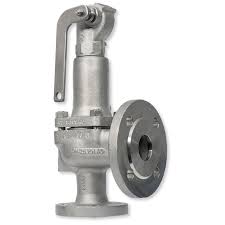
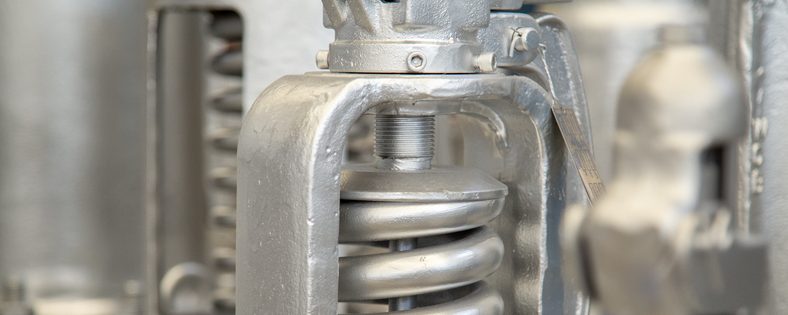
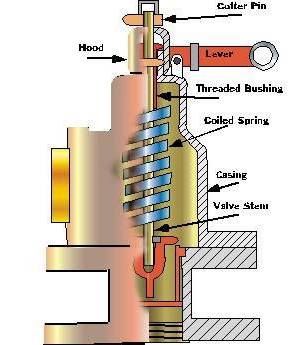
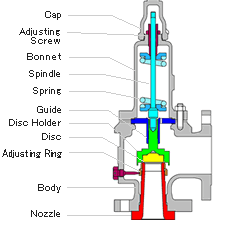
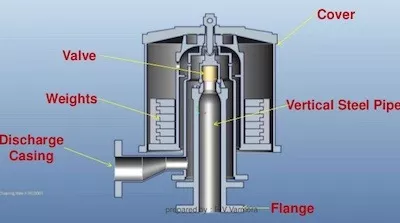
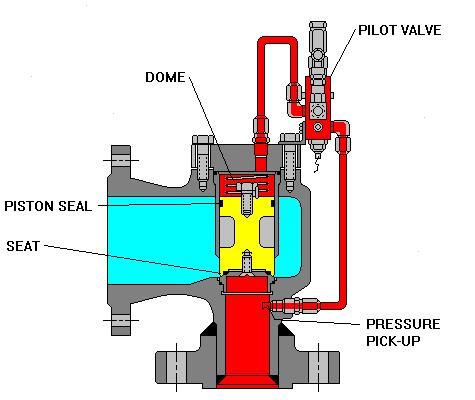

7 Responses
Thank you for sharing such an informative and thought-provoking article. It’s evident that a lot of effort went into creating this content, and it definitely paid off. Well done! I came across this website this is also helpful for me. Just check out once. https://www.nirmal.co.in/
this is really good and useful information, here is a link that consisting of different types and sizes of pressure reducing valves : https://www.zurn.com/products/water-control/pressure-reducing-valves .
I am mostly exposed to the spring-loaded type safety valves. I am not that familiar with the other types specially the dead-weight safety valves, thanks for this article.
I have presented a Calibration Procedure for pressure safety valve with a simple demonstration specially for the spring-loaded type where I believe will supplement this well-written article. You may check it in this link >> https://calibrationawareness.com/a-simple-pressure-safety-valve-calibration-procedure
Best regards,
Edwin
Thanks For Sharing The Amazing content. I Will also share with my friends. Great Content thanks a lot.
difference between safety valve and relief valve
Thank you for sharing such an informative article with us
Superb such wonderful information given keep sharing more thanks for it
I got good knowledge I using this website